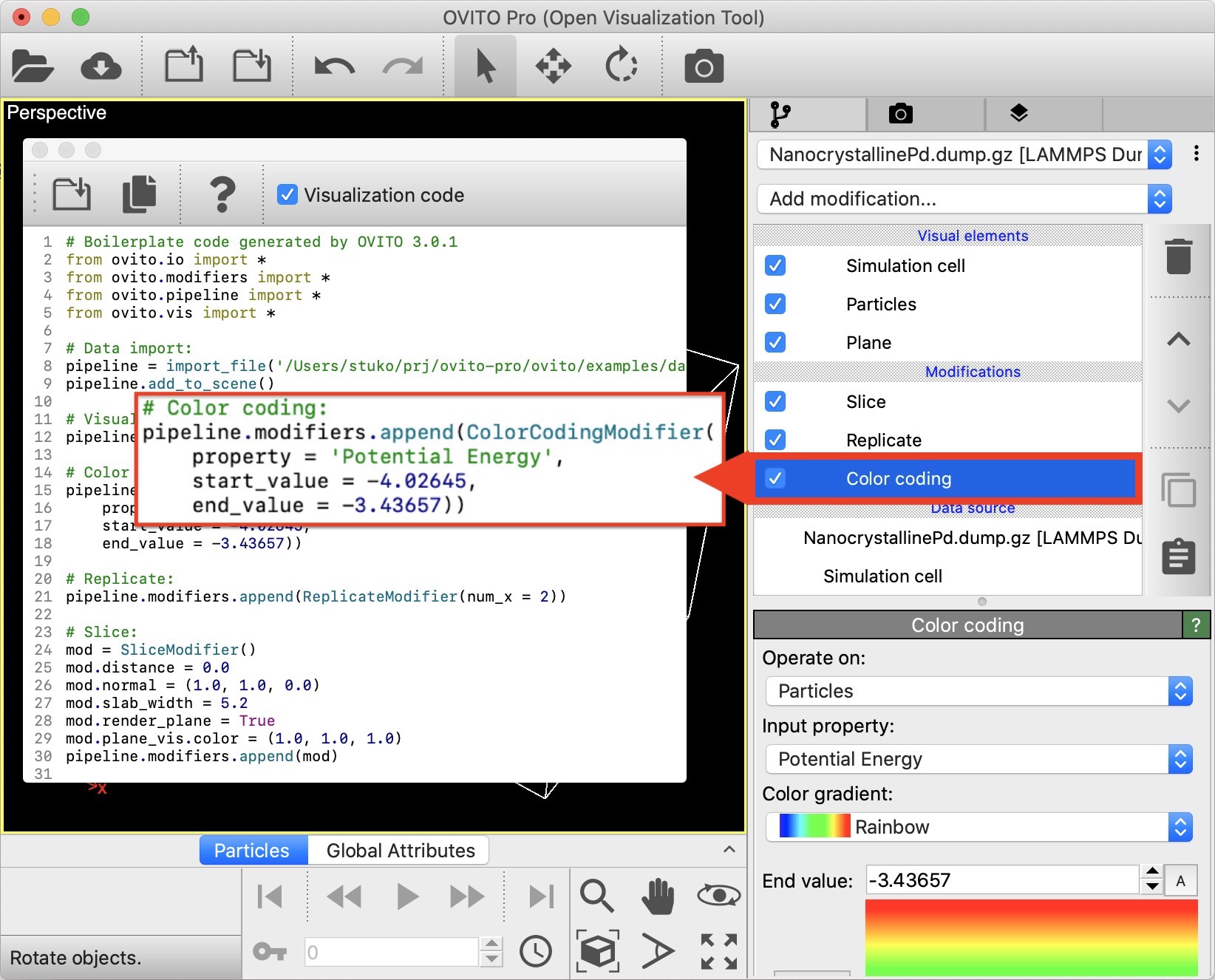Python code generator pro

OVITO Pro features a Python code generation tool that converts any data pipeline created via the graphical user interface into an equivalent Python script. This allows users to automate data post-processing and visualization workflows outside of OVITO.
As you adjust modifier or rendering parameters interactively, the code generator dynamically produces Python statements corresponding to your actions. The generated script can be saved, customized, and executed later as a standalone program.
Watch the Python code generator in action: https://youtu.be/sAGpCIBlWyk
Using the code generator
To generate a Python script, select . This opens the code generator window, where the script updates in real time as you modify the visualization scene, the pipeline(s), the render settings or the viewports.
By default, the code generator only produces Python code for the simulation file import and the data pipeline setup, which is sufficient for data processing and analysis. To include camera settings, rendering parameters, and visual element settings, enable the option Include visualization code. This is particularly useful for automating image and animation rendering tasks.
Supported features
The code generator can produce Python scripts for:
Data file import (all arguments of
ovito.io.import_file())Visual elements
Modifiers
Viewport layers
Viewport camera configurations
Rendering engine configuration
Image and animation render settings
Manual modifications made to the imported model in the GUI, e.g. colors/radii of particle types
Multiple or branched pipelines in the same scene
Limitations
Currently, the code generator does not consider:
Exporting data to an output file
Key-frame based parameter animations